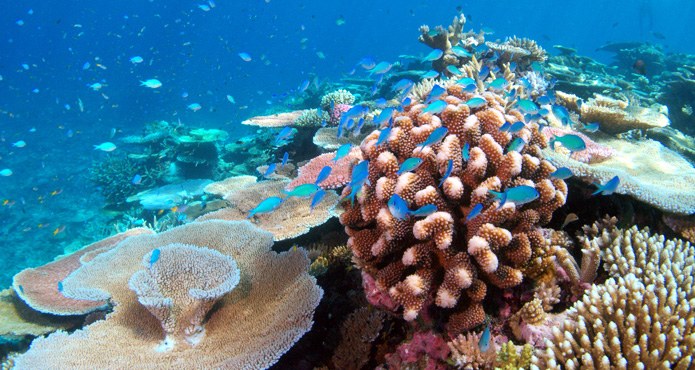In a multi-national, multi-continental collaboration, researchers from the James Cook University (Australia), University of Copenhagen (Denmark), and the University of Texas at Austin (USA) set out to discover what temperature reef fish prefer and how their preference might alter their behavior and choice of habitat.
Dr. Jodie Rummer describes their experiment: “We exposed groups of blue-green damselfish (Chromis viridis) tofive different temperatures between 23 and 33 degrees [Celsius] (73.4 to 91.4°F) during the 27 week period. One fish from each group was then placed inside two adjoining tanks where the water temperature can rise and fall. The fish were pretty smart. When it got too hot or cold they moved to the other side.”
“Overall, they favoured 29°C (84.2°F) which was also the best temperature for a healthy metabolic rate. Anything higher than that and the fish needed 2-3 times more energy to cope,” concluded Rummer. Lead author Adam Habary added: “Fish that were restricted to 33°C lost 30% of their body weight and some of them died.”
Of course, this experiment focused on chormis, and we can’t extrapolate that other reef fish (especially those from different latitudes and/or depth) also favor 29°C. But the findings demonstrate that fishes have distinct preferences for temperatures and will choose environments they are most comfortable with when given the choice.
This study set out to show that wild reef fish may move to cooler waters as ocean temperatures continue to increase. The paper Adapt, move or die – how will tropical coral reef fishes cope with ocean warming is published in the journal Global Change Biology.










0 Comments